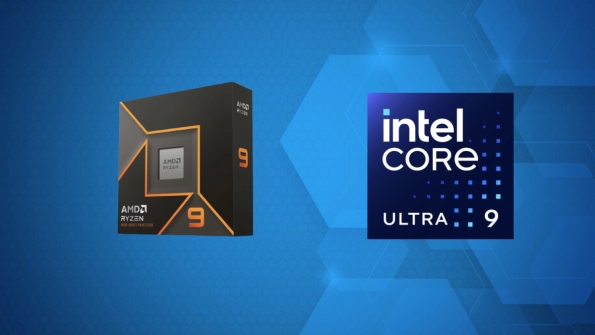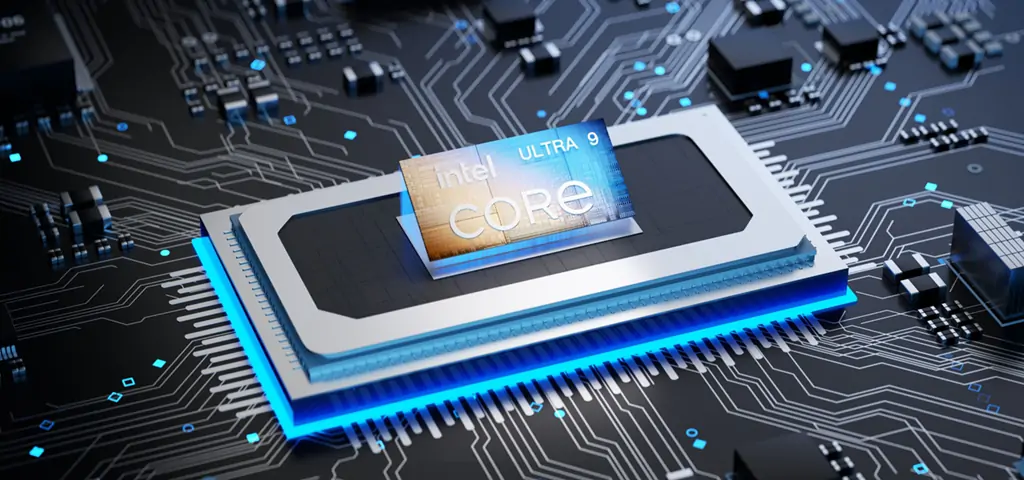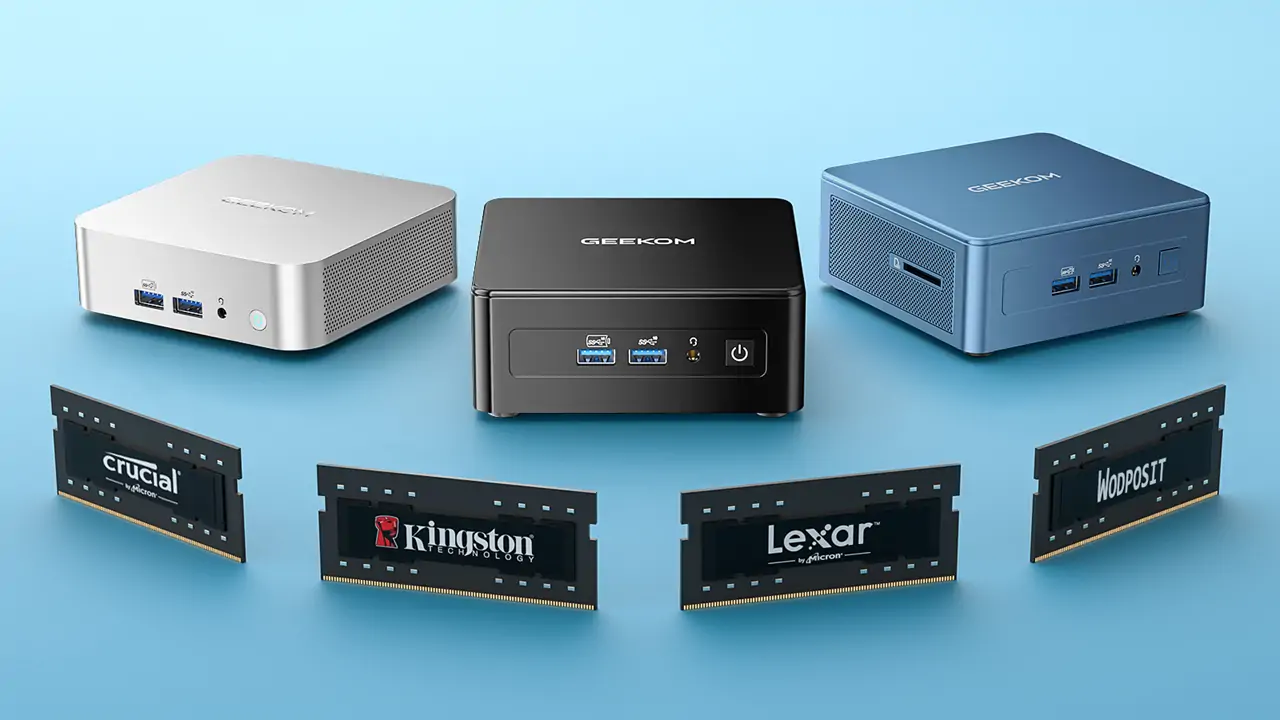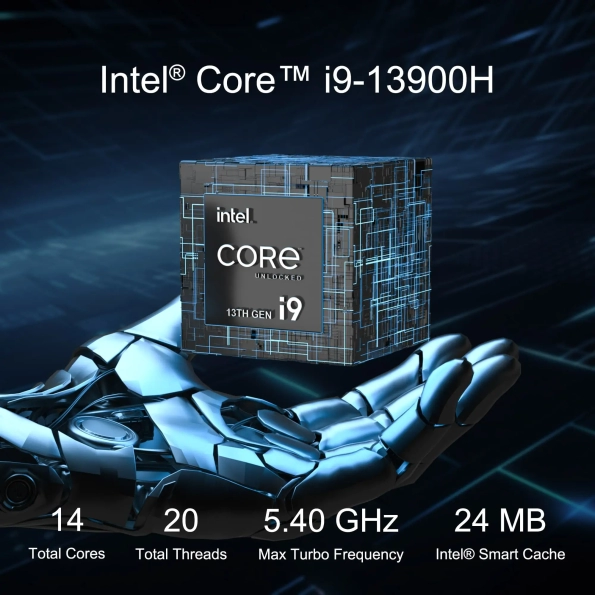Introduction to the Two Most Powerful CPUs
The year 2025 presents a decisive confrontation between two powerful processors that dominate the desktop computer market: the Intel Core Ultra 9 285K and the AMD Ryzen 9 9950X3D. Intel’s Core Ultra 9 285K, released in October 2024, is based on the most advanced 3nm Arrow Lake architecture and features a hybrid configuration with 24 cores (8 performance cores and 16 efficiency cores) and 24 threads, capable of reaching up to 5.5 GHz turbo boost. Furthermore, it features DDR5-6400 memory, PCIe 5.0, and is equipped with an integrated Intel Arc graphics card, making it not only suitable for gamers but also for content creators and developers.
Having hit the market in January of the next year, AMD’s Ryzen 9 9950X3D relies on Zen 5 architecture and 3D V-Cache technology. The device supports 16 cores and 32 threads, with a processor clock speed of up to 5.7 GHz. The huge 128MB L3 cache ensures high-speed gaming as well as multitasking tasks to be executed. The two processors mentioned above are both the kings of their respective platforms, catering to a specific group of people—enthusiasts who are looking for a top-tier machine with respect to speed, efficiency, and future features.
Performance and Specifications
Intel’s Core Ultra 9 285K and AMD’s Ryzen 9 9950X3D are both performance beasts that rely on different methods to power the desktop’s high-end performance.
| Processor | AMD Ryzen 9 9950X3D | Intel Core Ultra 9 285K |
|---|---|---|
| Price | ~$1200 | ~$1000 |
| Microarchitecture | Zen 5 X3D | Lion Cove / Skymont |
| Cores / Threads (P+E) | 16 / 32 | 24 / 24 (8+16) |
| P-Core Base / Boost Clock (GHz) | 4.3 / 5.7 | 3.7 / 5.7 |
| E-Core Base / Boost Clock (GHz) | N/A | 3.2 / 4.6 |
| Cache (L2/L3) | 144MB (16+128) | 76MB (36+40) |
| TDP / PBP or MTP | 170W / 230W | 125W / 250W |
| Memory | DDR5-5600 | CUDIMM DDR5-6400 / DDR5-5600 |
The Core Ultra 9 285K is based on the Arrow Lake architecture and is a hybrid core processor with a total of 24 cores and 24 threads, broken down into 8 performance cores and 16 efficiency cores. This processor boasts a 3.7 GHz clock speed at the base and may turbo up to 5.7 GHz. The CPU is capable of DDR5-6400 memory and PCIe 5.0 support and is known to come with an onboard Arc graphics card. Besides, the LGA 1851 socket, with a cache of 76MB (36MB L2 + 40MB L3), is the main reason for the strong platform compatibility and fast data access. Most importantly, it’s equipped with a dedicated NPU for AI workloads, decisively giving it an edge for future uses.
The Ryzen 9 9950X3D from AMD, the Zen 5-based processor, has come to be famous for traditional 16-core, 32-thread processing and incredibly high base and boost clocks at 4.3 GHz and 5.7 GHz, respectively. The all-new 128MB 3D V-Cache is probably the main reason it can boast such a 144MB cache (16MB L2 + 128MB L3), which is a huge boost to gaming and multitasking. This line also features DDR5-5600 memory, PCIe 5.0 technology, and is compatible with the AM5 socket. Despite the 230W maximum boost TDP, the 9950X3D is still efficient with a relaxed 170W standard TDP. AMD excels in having more threads and has a much larger cache, while Intel only offers more memory bandwidth and AI.
Gaming Benchmarks and Performance
If one gets gaming right, the AMD Ryzen 9 9950X3D is preferred over the Intel Core Ultra 9 285K. Employed for the 1080p display together with Nvidia RTX 5090, the Ryzen 9 9950X3D gives off an average frame rate that is almost 34% more than that of Intel’s top, since 16 popular games are taken together. The increased size of the L3 cache the AMD processor uses—3D V-Cache, with its 128MB, to be precise—is mainly responsible for the further improvement of the gaming speed, since it significantly abates latency, and at the same time, it feeds the GPUs with surplus data. Moreover, the 27% improvement in 1% low frame rates shown by the Ryzen CPU implies that the gameplay is more continuous and less disrupted than before in intense scenes.
There is no doubt that in terms of gaming, the 9950x3d is currently the most powerful gaming cpu in the world: AMD Ryzen 9 9950X3D: The ultimate blessing for gamers!
The hybrid architecture and the higher core number of Intel’s Core Ultra 9 285K are good assets in engineering and data processing workloads. But they are not advantages that prove useful when gaming is the objective. This is why it is the least performing processor in gaming out of the ones discussed above. It may be that in many cases, the AMD processor was able to record even a 23% difference between the games, thus surpassing Intel’s chip totally. However, some of the main features of the Intel processor, like its support of faster DDR5-6400 memory and built-in Arc graphics, cannot be considered as the factors that could outweigh, from the perspective of their influence on gaming performance, the impact of AMD’s special features in the gaming area.
If we move to higher resolutions, the differences in the CPUs themselves become less noticeable due to the gaming card becoming a greater burden. But if we speak about the 1080p and 1440p resolutions where the performance of the CPU mainly matters, then the Ryzen 9 9950X3D is the unquestionable leader. There are only a few rare occasions when the Intel processor slightly surpasses AMD, and even then, the difference is only a few frames per second at most.
The following is a detailed comparison between 9950x3d and 285k in several games:
AMD Ryzen 9 9950X3D excels in gaming performance through the provision of superior cache and frame consistency.
Productivity Performance
The Intel Core Ultrabook 9 285K and AMD Ryzen 9 9950X3D both perform well in productivity. However, where they excel is slightly different. In multi-threaded tasks like Cinebench 2024, the two chips perform very closely. Intel’s 9 285K takes the win in multi-core performance, while AMD’s 9950X3D falls just short. Single-core results are also very close, though Intel has the edge in our comparison thanks to Turbo Boost and more efficient cores.

AMD excels in those real-world scenarios that are related to productivity and are the working ground of higher thread counts and larger cache. The performance in applications like Blender rendering and 7-Zip compression is a show of Ryzen’s lead since the 16 cores and the huge 128MB 3D V-Cache not only eliminate bottlenecks but also speed up workflows. For instance, if we look at the Blender rendering times running on the 9950X3D, we will see that they are almost 14% less than those of Intel’s chip. On the other hand, the use of Adobe Photoshop is also in favour of AMD, thanks to effective cache usage.

Intel’s Core Ultra 9 285K is the best solution for workloads that are hybrid and AI-oriented, this being possible through its NPU endowed with top performance that significantly accelerates AI-based and video encoding tasks. Therefore, Intel is the leading brand of Adobe Premiere benchmarks, indicating that it is the main hardware accelerator.
All in all, the Ryzen 9 9950X3D from AMD is somewhat better than the Ultra 9 285K of Intel in terms of raw multi-threaded productivity and cache-heavy tasks. Furthermore, the Ultra 9 285K from Intel is more suitable for use in AI-accelerated and hybrid-optimised types of work. As a result, the choice mostly depends on the selected software and workflow. AMD Ryzen 9 9950X3D is the front-runner in regular productivity, although for AI-accelerated applications, Intel has the edge
Overclocking
Both the Intel Core Ultra 9 285K and the AMD Ryzen 9 9950X3D have their multipliers unlocked, which means that they have invited enthusiasts to solve the puzzle of how far their processors can go. The older platform of an Intel chip is conducive to many BIOS menus and options that can provide a stable increase in the clock speed of the processor up to 5.8 GHz using good cooling systems. The task of optimising both the performance and the efficiency cores of the hybrid architecture is a must, but it pays off in the applications that are frequency-bound.
Despite being unlocked, AMD’s 9950X3D approach is more conservative because of the existing 3D V-Cache. Better performance as a result of overclocking is minimal and is regarded as mild at best; however, it points to the improvement of energy efficiency and optimisation of memory sticks. The users typically see a boost of 5.5 to 5.7 GHz on a few cores, which is stable enough, but if they go further, it may lead to overheating, and the L3 memory becomes unstable. On the contrary, Intel’s processor becomes the most powerful and flexible solution for the situation, and it thereby allows those who favour aggressive tuning to achieve the desired speed.
At the same time, the Intel chip remains the most versatile and widely applicable for extreme overclocking, and AMD sees efficiency as important as cache stability. A moderate level of tuning combined with the use of high-quality cooling is, therefore, the best way to achieve the right balance in terms of productivity and stability for most users. Intel Core Ultra 9 285K is the winner in terms of overclocking potential and flexibility.
Power Consumption, Efficiency, and Thermals
Power efficiency and thermal management are vital components of CPU performance, and the Intel Core Ultra 9 285K and AMD Ryzen 9 9950X3D do not follow the same direction in these two aspects. In case of heavy load, the Ryzen 9 9950X3D is wicked efficient, using power between 178W and 228W, and temperatures typically stay below 88°C. In the matter of gaming, power consumption rarely exceeds 137 W, thus making it ideal for high-performance systems with compact cooling. It has not only been proved to be more power-conserving by an average of 30%, but also it has set up the highest performance per watt in both productivity and gaming tasks.
Intel’s Core Ultra 9 285K, while a vast improvement compared to its predecessors, utilises a wider power range from 219W to 325W when operating under full loads. It is very much capable of hitting the 105°C mark, even though it does not have the cutting-edge liquid cooling. On the other hand, it comes first with the lowest power consumption in light and idle scenarios because it can even reach 39% lower than Ryzen at idle. In gaming, the surprise is a power draw of about 80 W on average, indicating a remarkable drop from previous Intel chips. Still, it’s only the highest quality liquid coolers that can do the job efficiently without any risk of a power draw. AMD Ryzen 9 9950X3D, which is efficient in general and also thermally oriented, particularly when it faces heavy workloads over an extended period.
Price and Value
AMD launched the AMD Ryzen 9 9950X3D for $1200 in 2025 to enter the high-end of the market, which was loved by game enthusiasts and content creators. Although it costs more, the Ryzen 9 9950X3D is the best among the gaming performance ones, which can be interpreted as about 34% faster than Intel’s Core Ultra 9 285K; the latter, despite its weak productivity, remains a strong contender. The price of Ryzen remains strong, but the value of the gaming per dollar is still exceptional, which is why it is the top choice for players aiming to get the most out of the game.
With an average selling price of $1,000, the Intel Core Ultra 9 285K offers high performance at a reasonable price-performance ratio. However, it still lags behind AMD in terms of gaming speed and multitasking efficiency.
Of course, if you think the price is too expensive, these two models may be more cost-effective: AMD Ryzen 5 vs Intel i5.
Summing up, it is the AMD Ryzen 9 9950X3D that can justify its higher price by means of better raw and gaming value, while the Core Ultra 9 285K is for those who already have a tight budget yet need a good performance device. AMD Ryzen 9 9950X3D gives gamers and power users a better deal despite the higher price.
Summary and Verdict
The highest-end desktop central processing units, AMD Ryzen 9 9950X3D and Intel Core Ultra 9 285K, embrace the epitome of innovation. Additionally, they cover different areas, so they really can’t be compared. The AMD perspective comes with the 9950X3D gaming processor, which is 34–37% faster on average in the frame rate than the Intel one at 1080p, originating largely from the 144MB L3 cache and Zen 5 architecture. Besides, it has qualified for the leading position in the case of multi-threaded productivity and cache-heavy workloads without any challenges, in addition to the gaming sector. In contrast, the Intel processor in the form of the Core Ultra 9 285K model and 24-core hybrid Arrow Lake design can boast of better single-threaded performance in some of the tests, as well as an integrated NPU to accelerate AI tasks. It is also found to be relatively cheaper, and at the same time, it is more conservative in idle and gaming power consumption, thus attracting the attention of frugal customers.
On the whole, the Ryzen 9 9950X3D is the best choice for people whose priorities are gaming and multi-threaded performance. As for users targeting AI, content production, or looking for an affordable alternative, the Core Ultra 9 285K is definitely a serious contender.































